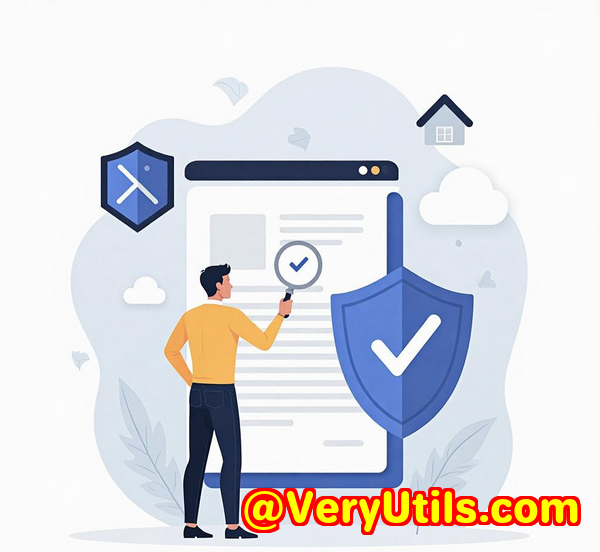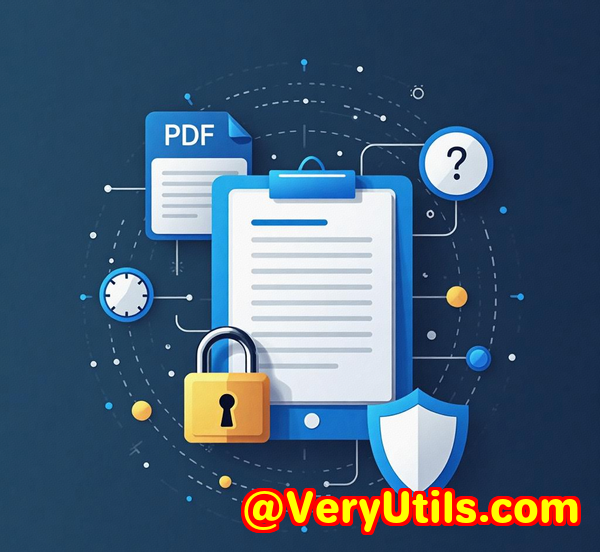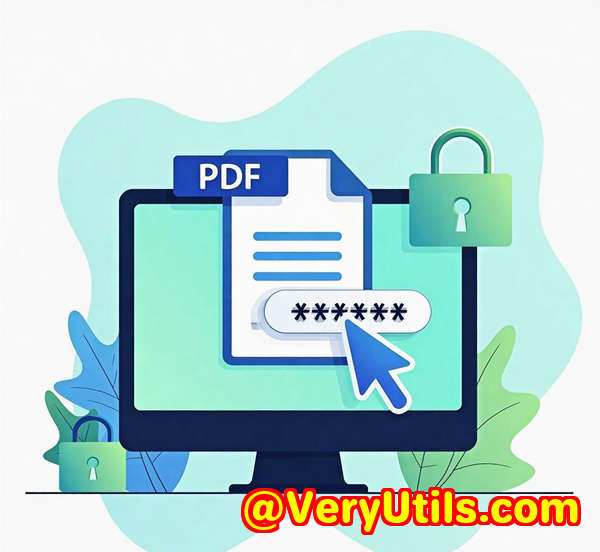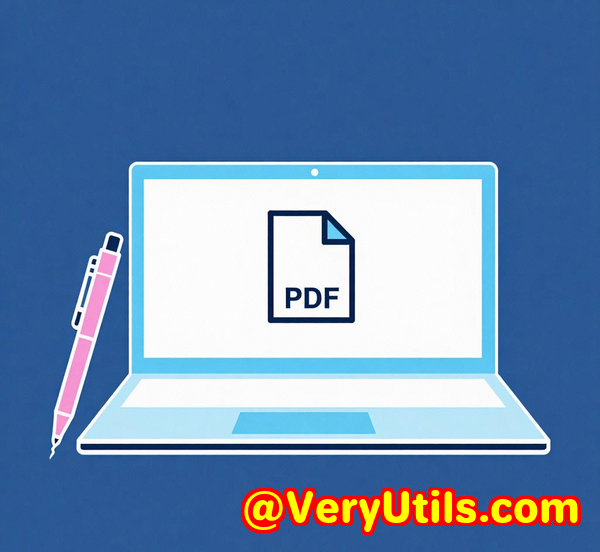Automatically Convert Print Jobs to Tagged PDFs with Table Recognition
Automatically Convert Print Jobs to Tagged PDFs with Table Recognition
Meta Description:
Turn chaotic print jobs into tagged, accessible PDFs with table recognition. See how I automated document workflows using VeryPDF's developer tools.

Every print job used to be a mess
Back when I was working in a mid-sized legal firm, Mondays meant one thing: fighting with the office printer.
We'd process hundreds of client forms, case files, and scanned documentsevery single one dumped into a digital black hole after printing. The files were unreadable, unsearchable, and definitely not accessible. Every time I had to go back and find a table from a scanned contract or financial form, I'd waste 10-15 minutes manually scanning through dozens of PDFs.
Even worse?
Most of those files didn't have any tags for screen readers or compliance. That became a real problem when we had to submit accessible versions to government agencies.
That's when I started looking for something that could automatically convert print jobs into tagged PDFswith proper table recognition built in.
The moment I found VeryPDF's PDF Solutions for Developers
After testing a few clunky open-source tools and overpriced enterprise platforms, I came across VeryPDF PDF Solutions for Developers.
This wasn't just some throwaway software. It actually solved the exact pain point I had.
I wasn't looking for just another PDF viewer or converter. I needed a backend solutionsomething smart enough to:
-
Grab a print job from any Windows printer.
-
Recognise tables from image-based files.
-
Add accessibility tags.
-
Deliver a final PDF that was actually usable.
VeryPDF delivered.
What this tool actually does (and why it's so damn useful)
If you're a developer, system admin, or IT lead handling document workflows at scalethis thing is built for you.
Here's what it can do, without breaking a sweat:
-
Intercept print jobs directly from Windows printers
It creates a virtual printer that catches everything. Contracts, invoices, formswhatever gets printed, VeryPDF grabs it and starts processing.
-
Apply ABBYY-powered OCR to recognise text and structure
This is huge. The OCR isn't some lightweight toyit's enterprise-grade, built on ABBYY's FineReader Engine. It can extract tables, text, metadata, and even signatures from scanned images or poor-quality PDFs.
-
Generate tagged PDFs
Once the OCR is done, it adds proper tagging to make the document accessible. Think screen-reader support, logical reading order, and compliance with PDF/UA and WCAG standards.
-
Recognise and extract tables from scanned docs
This is where it really stands out. I used it to process scanned Excel printouts and legal templates with complex table structures. Not only did it extract the tables, it preserved rows and columns accurately, making the data exportable and searchable.
Here's how I actually use it at work
I built a simple workflow around this.
-
Set up the VeryPDF Virtual Printer
All our scanned forms are "printed" to this virtual driver.
-
OCR kicks in
VeryPDF runs its OCR engine in the background. It's fasteven with batches of 50+ files. Multilingual recognition is spot on. We had documents in English, German, and French, and it handled them with zero fuss.
-
Tagging and accessibility formatting
The documents are then processed with semantic tags addedespecially useful for visually impaired users or accessibility compliance.
-
Table recognition
This part blew me away. I uploaded a scanned reportno editable text, just images. VeryPDF not only extracted the table but reflowed it logically in the PDF. I could copy/paste that data into Excel with no issues.
What stood out the most
-
Speed: I could batch process 100+ files with minimal memory usage. Unlike Adobe, which crashes when you throw large volumes at it.
-
Accuracy: The OCR caught even lightly faded typewritten content. Even signatures and stamps were captured.
-
Flexibility: The command-line interface and SDK let me plug it into our internal systemsno clunky GUI needed.
-
Real accessibility: Not just "find text," but actual tags, logical reading order, and screen-reader support.
How it compares to the usual suspects
Let's be honest. Most PDF tools are either:
-
Too basic (can't process tables or run OCR well).
-
Too bloated (enterprise software with confusing UIs and huge license costs).
-
Too manual (you still need to tag and format everything yourself).
VeryPDF is automated, developer-friendly, and designed for scale.
This tool saved me hoursliterally
Before I started using VeryPDF, I spent 1015 minutes per document doing the following:
-
Manually renaming files
-
Running OCR through a separate tool
-
Trying to manually tag PDFs for accessibility
-
Copy/pasting tables (which never worked)
Now? The system does it for me.
I built a batch process over a weekend and now it runs silently every night. New documents go in, and tagged, table-friendly, accessible PDFs come out.
Real-world use cases
This isn't just for law firms like mine.
You'll find it useful if you:
-
Run a finance team that needs to extract tables from scanned invoices
-
Manage healthcare records where accessibility and tagging are a must
-
Work in government or education, where WCAG compliance is non-negotiable
-
Process large-scale print jobs, such as reports, archives, or payroll data
Bottom line
If you're dealing with scanned print jobs, PDF tagging, or table recognition, this tool is a no-brainer.
It saved me time. It made our workflows smarter. And it got us ahead of compliance requirements.
I'd recommend VeryPDF PDF Solutions for Developers to anyone managing document-heavy workflows or building backend PDF automation.
Click here to try it out for yourself: https://www.verypdf.com/
Start your free trial now and boost your productivity.
Need something even more custom?
VeryPDF isn't just about ready-made tools.
They offer custom development services too.
Whether you're working on Windows, Linux, or macOS, they'll help you build exactly what you need. They specialise in:
-
Windows Virtual Printer Drivers that output to PDF, EMF, or TIFF
-
Print job monitoring and hooking into Windows API
-
Custom OCR, table recognition, digital signature workflows
-
Barcode extraction, layout analysis, form generation
-
Even cloud-based tools for PDF processing and secure document storage
Need a solution that works with Python, PHP, C++, .NET, JavaScript? They've got it covered.
If you've got a technical workflow that needs PDF processing, don't hack it together. Let VeryPDF build it for you.
Reach out through their support centre: https://support.verypdf.com/
FAQs
1. Can I integrate VeryPDF into my existing backend systems?
Yes. VeryPDF offers SDKs and command-line tools compatible with most programming languages, including Python, .NET, C++, and Java.
2. Does it support multiple languages for OCR?
Absolutely. The OCR engine is powered by ABBYY and supports a wide range of languagesperfect for international teams.
3. What kind of tagging is added for accessibility?
The tool adds semantic tags, logical reading order, and supports PDF/UA and WCAG compliance standards.
4. Can this extract tables from image-only scanned documents?
Yes. It accurately detects rows and columns, even from low-quality scans, and outputs them as structured, searchable tables.
5. Is there a GUI version or just command-line tools?
There's both. But if you're a developer, the command-line and SDK options give you full control over automation.
Tags / Keywords
-
convert print jobs to tagged PDFs
-
PDF table recognition
-
OCR PDF automation
-
PDF/UA compliance
-
developer PDF solutions
-
batch PDF conversion
-
accessible PDF generation
-
VeryPDF SDK
-
print job to searchable PDF
-
PDF tagging for screen readers



